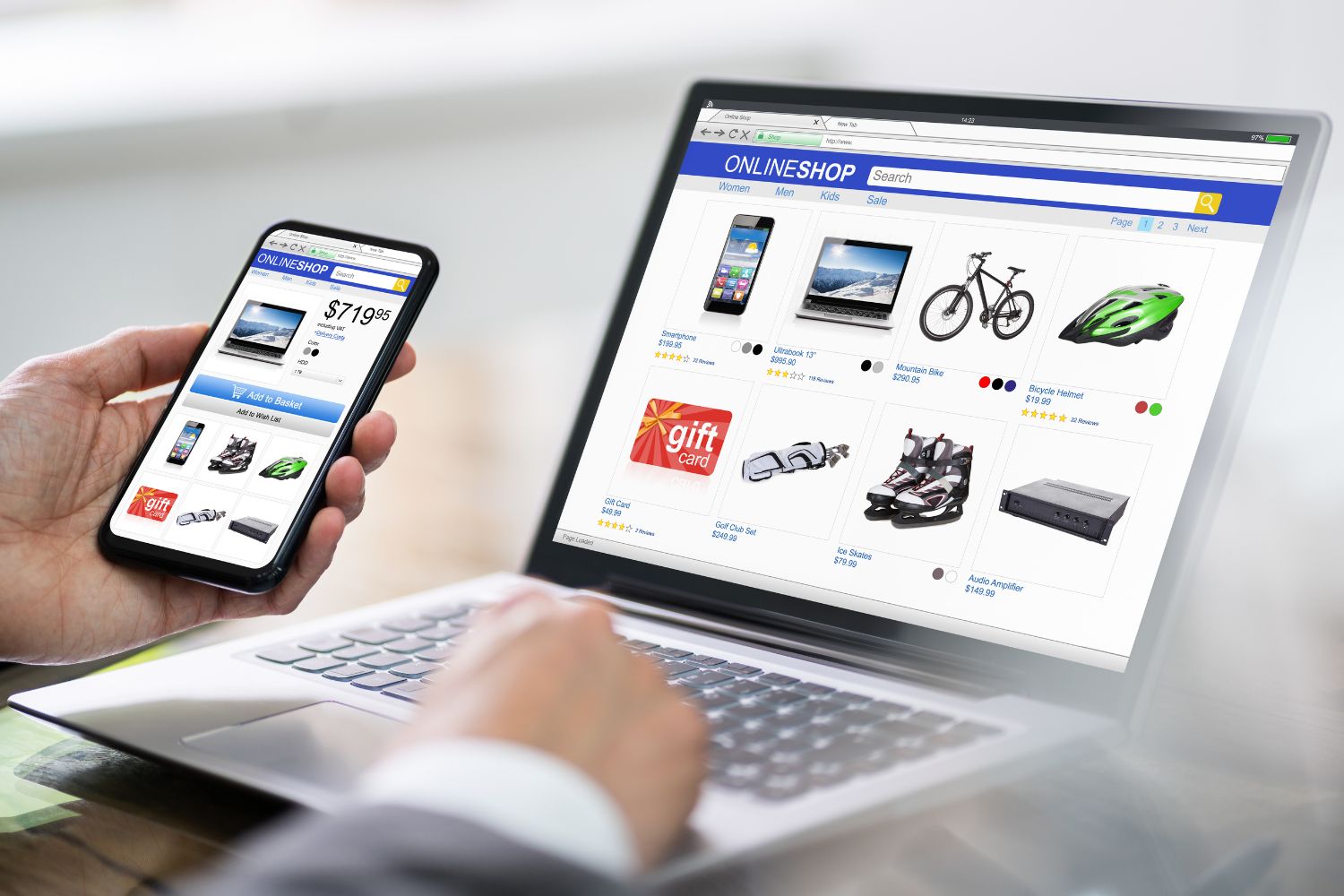Online Store
An online store is a digital platform that enables businesses to sell products or services online, allowing customers to conveniently browse, select, and purchase items from their devices.
Online Store
An online store is a virtual platform where consumers may explore, select, and buy items or services. It functions as a digital storefront.
Create an online store
Developing an internet business entails a number of processes and considerations. Here’s a basic guide to setting up an online store:
1. Define your items and your target market:
Determine the items or services you wish to offer online and who your target market is. Understand their requirements, interests, and shopping habits to better design your online business.
2. Select an e-commerce platform:
Choose an e-commerce platform that meets your requirements. Shopify, WooCommerce (WordPress plugin), BigCommerce, Magento, and Squarespace are all popular possibilities. Consider features such as usability, customisation, payment gateway integrations, scalability, and cost.
3. Register a domain name:
Select a distinctive and unique domain name for your online store. Register the domain using a domain registrar or with the domain registration services offered by your preferred e-commerce platform.
4. Create your online store:
Customize the appearance and feel of your online store to match your brand identity. To construct an aesthetically beautiful and user-friendly website, use pre-designed themes or collaborate with a web designer/developer. Ascertain if the design is responsive and mobile-friendly.
5. Create product listings:
Create product listings that include descriptive descriptions, high-quality photos, price, and any other pertinent information. Organize items into categories and utilize best practices for search engine optimization (SEO) to boost their exposure in search engines.
6. Set up a secure payment gateway:
Select a secure payment gateway that accepts common payment methods and interfaces with the e-commerce platform of your choice. PayPal, Stripe, Authorize.net, and more payment processors are available. Configure the payment gateway so that transactions are handled safely and customers have a pleasant checkout experience.
7. Set up shipping and fulfillment:
Decide on your delivery methods, pricing, and policies. Configure delivery choices through your e-commerce platform or interface with third-party shipping providers such as UPS, FedEx, or DHL. Determine how you will manage order fulfillment, whether in-house or through a fulfillment agency.
8. Set up shipping and fulfillment:
Decide on your delivery methods, pricing, and policies. Configure delivery choices through your e-commerce platform or interface with third-party shipping providers such as UPS, FedEx, or DHL. Determine how you will manage order fulfillment, whether in-house or through a fulfillment agency.
9. Integrate analytics and monitoring tools:
Such as Google Analytics, into your online store to measure visitor behavior, traffic sources, conversions, and other vital information. Use this data to acquire insights and improve the performance of your marketing and website.
10. Launch and advertise your online business:
Once your online store is up and running, thoroughly evaluate its functionality to ensure everything is operating properly. Create a marketing plan, such as content marketing, social media promotion, paid advertising, influencer partnerships, or email marketing, to bring visitors to your shop.
11. Continuously monitor and optimize the success of your online store:
including sales, customer feedback, and website statistics. Make data-driven decisions to improve the user experience, marketing strategies, and conversion rates of your shop.










